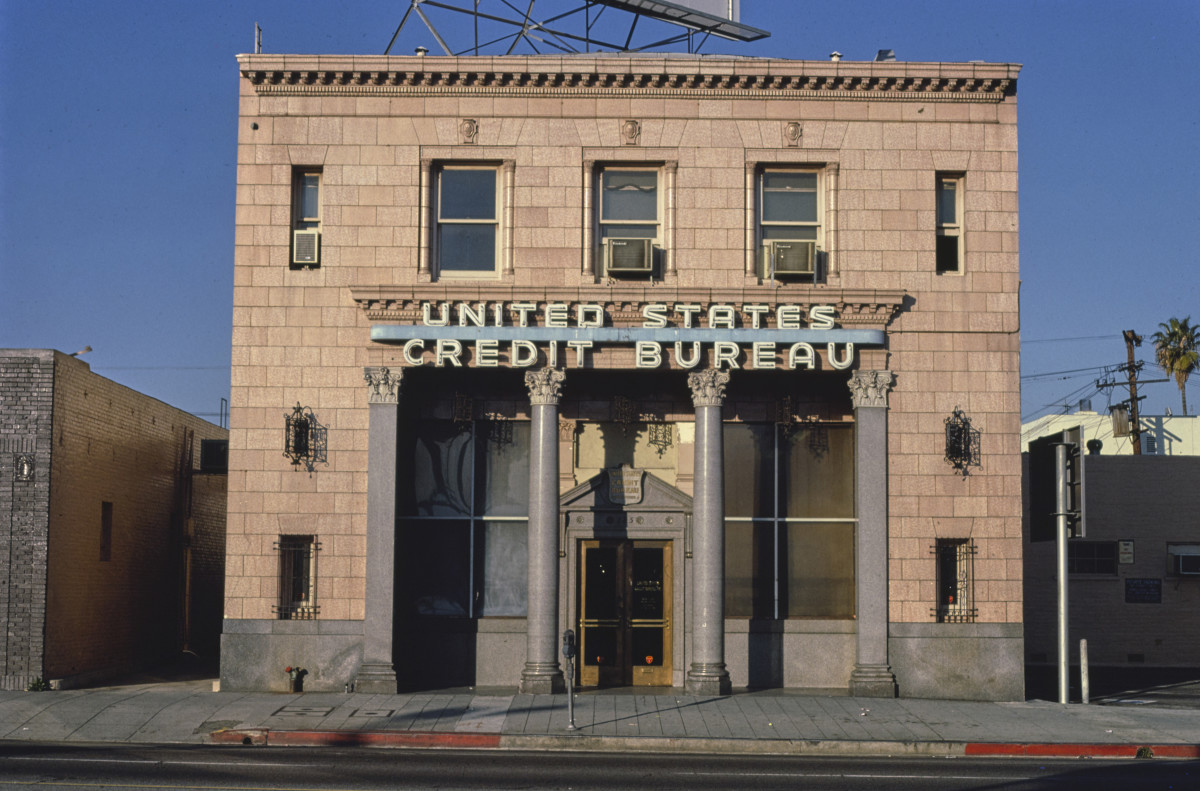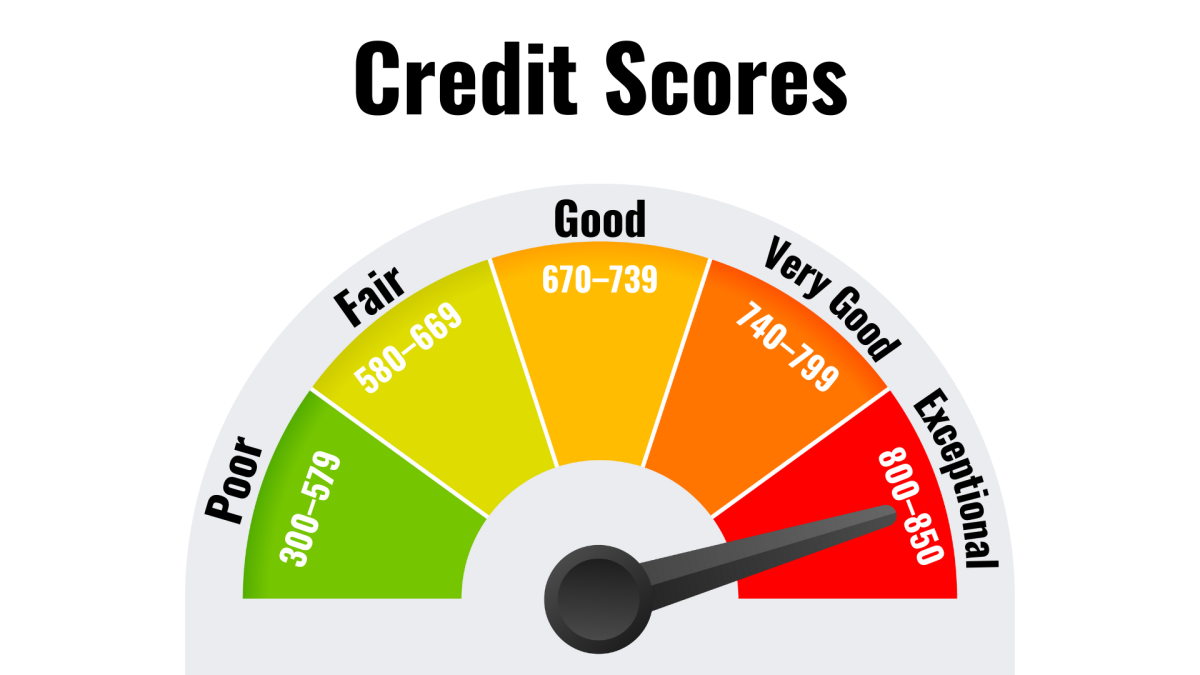
TheStreet/Shutterstock
Planning to buy a house or a car? Are you taking out a loan to start a business, or even just trying to rent an apartment? With every big purchase you make, your credit score comes into play. This three-digit number has a huge impact on your financial life, as it not only affects whether or not you can make that big purchase, but also how much interest you will be charged on it.
For example, if you have a high credit score when you take out a loan, you will have less interest to pay because you are deemed more creditworthy, or more likely to make your payments on time and pay the loan back in full. A low credit score means that you are more likely to default on your loan, or you may have declared bankruptcy, and so the interest you will be charged will be much, much higher — if you’re even eligible for a loan in the first place.
To illustrate: According to Finra, the Financial Industry Regulatory Authority, considering similarity in all other factors, like income, down payment, and monthly debts, a person with a credit score of 760–850 will pay 1.5% less on a $200,000 mortgage than a person with a credit score of 620–699. That adds up to more than $66,343, or $184 per month, over the life of a 30-year mortgage—so you can see just how valuable a good credit score can be.
But where do credit scores come from, who calculates them — and how? Their history is fascinating, if a little disturbing …

HUM Images/Universal Images Group via Getty Images
How does credit work? When were credit scores invented?
While the concept of credit has been around for thousands of years, consumer credit bureaus in the United States didn’t get off the ground until the 19th century — and credit scores wouldn’t come along for a century after that. In the 1800s, along with the rise of the new Middle Class, department stores began extending credit, a form of “buy now, pay later” shopping that encouraged people to purchase things.
One commercial credit bureau, the Mercantile Agency, employed hundreds of “correspondents” in towns across the country whose sole job was to compile reports about consumer buying habits. They gleaned this information from store sales records, but unfortunately, they didn’t stop there. They also added in personal details about the consumer’s race, sex, and marital status, and even conducted “investigations” to create an assessment of their character. This included the type of details that would raise 19th-century eyebrows, such as whether or not the consumer was divorced, if they attended church, visited prostitutes, drank or gambled, what their political party was, or if they had ever been arrested. In effect, they were spying — because to Victorian sensibilities, moral laxity was actually a form of credit risk.
It was also a colossal invasion of privacy. Obviously subjective, frequently prejudicial, and often downright erroneous information was bundled into ledgers, first in tiny, calligraphic script, and then later, upon the invention of the typewriter, typeset into leather-bound volumes and sent to what would be akin today to a master storage house in a city like New York. This practice continued well into the 20th century.
Individuals were not allowed to purchase their own credit reports, but companies that had an interest in one’s next big purchase — like banks, retailers, landlords, and public utilities — certainly could. The police took an interest in them as well. A consumer credit report was like a secret file that determined one’s worth — and reputation — forever.
Thankfully, in 1970, the U.S. Congress passed The Fair Credit Reporting Act (FCRA), which provided regulation over the collection, use, and distribution of consumer credit information. Through the FCRA, people were finally allowed to access their own credit reports as well as all of the information the credit reporting bureau had on them. It also limited who else could access their report.
Additionally, consumers gained the right to hear if their credit reports had been used to negatively determine the outcome of a job, insurance policy, or credit application, and it gave them the right to dispute any information on their credit report that they believed to be false.
In 1974, the Equal Credit Opportunity Act made it illegal to deny credit based on a person’s race, sex, marital status, religion, age, or status as a recipient of public assistance.

Smith Collection/Gado/Getty Images
There were 2,000 credit reporting bureaus in 1960, but due to the rise of computers, which digitized consumer data, by the 1980s, there were only three: Equifax, Experian, and TransUnion. All are still around today and are considered the main sources for credit reporting.
Amazingly, credit scores were not invented until 1989. That’s when the Fair Isaac Corporation, more commonly known as FICO, created a standardized credit scoring algorithm that could be used to assess a person’s creditworthiness. This score was based on information from Equifax, Experian, and TransUnion credit reports. By 1996, lenders were requiring credit scores to be included in mortgage applications.
While the FICO score quickly became the industry standard, another scoring model, called VantageScore, also exists, introduced in 2006 by Equifax, Experian, and TransUnion to compete with the FICO score. At first, the VantageScore used a very different scoring range, 501–900, but in 2013 it changed its range to be the same as FICO: 300–850.
Both use similar scoring factors, although the VantageScore places more weighting emphasis on the length of an individual’s credit history. It has yet to gain traction, though; when surveyed, 90% of lenders said they base their credit decisions on FICO scores.
What goes into your credit score? Credit factors explained
According to the Consumer Financial Protection Bureau, the U.S. government agency tasked with making sure that financial institutions are treating their customers fairly, a variety of factors go into the scoring models that calculate your credit score. These include:
- Payment history: How many on-time payments you’ve made and whether you’ve had missed or late bill payments
- Credit utilization: How much unpaid debt you currently owe and the percentage of your total credit limit that you’re currently using
- Credit age: The length of time you’ve had credit
- Total accounts: How many credit products you own, including your credit cards, loans, and mortgages
- Hard inquiries: How many new credit cards or credit applications you’ve applied for recently
- Bankruptcies and collection accounts: Whether you’ve been referred to a collections agency, have been under foreclosure, or have declared bankruptcy

Canva
What are the credit score ranges?
Both FICO Scores and VantageScores range from 300 to 850. A credit score of 850 is considered perfect, while 300 is the very worst. These credit scores are categorized into five general ranges: exceptional, very good, good, fair, and poor.
Individuals whose credit scores fall into the “good” categories are considered lower-risk borrowers, because they will repay their loans on time and within the terms stated in their loan agreements.
That doesn’t mean that consumers with credit scores that fall in the “bad” categories can’t obtain loans, but it does mean they are considered higher-risk borrowers, and as such, their lenders will set higher repayment rates, such as higher APR (annual percentage rates) on credit cards, higher interest rates on loans and mortgages, and impose increased fees.
Credit score ranges at a glance
Exceptional |
800–850 |
Very good |
740–799 |
Good |
670–739 |
Fair |
580–669 |
Poor |
Under 580 |
You may have seen scores that fall outside this classification — that’s because FICO has also created industry-specific scores, which calibrate the risk levels for things like auto loans and banking credit cards. These scoring models utilize a different scoring range, 250–900, but they are niche entities. All other credit assessments use the “base” FICO scoring model, which has a scoring range of 300–850.
View the original article to see embedded media.
What is the highest credit score?
850 is a perfect credit score, although according to FICO, only 1% of consumers achieve this milestone, and fewer still can maintain it from month to month. But you don’t have to stay up at night devising ways to hold onto a perfect score; the benefits of exceptional credit are enjoyed by everyone who falls within the 800–850 range.
Borrowers with exceptional credit scores are considered to be reliable: They make their payments on time (and have done so for a long time), and they carry low balances on their credit cards. They typically have the easiest time applying for new credit, and they also qualify for the prime rate, which is the lowest interest rate offered for a loan.
What is a very good credit score?
If your credit score is between 740 and 799, you also deserve congratulations. You may not be perfect, but you do have very good credit. This means you are paying your loans and credit cards on time, your credit card balance is low, and you’re considered to be a generally reliable borrower.
What is the average credit score?
As of 2023, the average American credit score reached a new high of 718, according to FICO. Credit scores rose throughout the Covid-19 pandemic, from a pre-pandemic average of 706 in 2019 to 708 in 2020, and increased to 716 in both 2021 and 2022.
This occurred in part because many Americans were limited by stay-at-home orders and travel restrictions, and they simply spent less. They also received income through programs like the Coronavirus Aid, Relief, and Economic Security (CARES) Act and the American Rescue Plan, which they used to pay down their debts and build their savings.
What is a good credit score?
Consumers who fall in the “good” range have credit scores between 670 and 739. They are still eligible for competitive interest rates, but they might not qualify for the prime rates offered to those in the higher categories.
But take note: If your credit score is below 690 and you miss a payment, lenders might penalize you by tacking on additional fees, or deduct more points from your credit score, which could send you into “fair” territory — or worse.
What is a fair credit score?
Credit scores in the 580–669 range are considered fair. You won’t be receiving the best terms on your loans, credit cards, or mortgage. Home borrowers who fall into this category are considered subprime.
That means you could pay a higher rate of interest or might be offered an adjustable-rate mortgage instead of one that’s fixed rate. After a low introductory period, these loans increase substantially, so be sure to read the fine print. You might also be asked to make a larger down payment on the mortgage or pay additional costs.
What is a poor credit score?
There is no such thing as a credit score of 0; the lowest credit score possible is 300. Credit scores between 300 and 579 are considered poor. If you find yourself in that range, you’re at high risk of defaulting on your loans, and as such, lenders will take steps to protect themselves when dealing with you, whether that’s by charging you high rates of interest, added fees — or denying your loan applications altogether.
Whether you’ve already defaulted on your credit cards, foreclosed on a mortgage, or declared bankruptcy, when you have a poor credit score, your credit is damaged, and it could take a long time for it to recover. At this point, you will have a hard time being approved for mortgages, car loans, or even some kinds of student loans. You may also be required to pay a security deposit to certain companies, like utility companies, to set up service, and you could also face higher insurance premiums as well.
The good news is that all is not lost. Credit scores aren’t set in stone; they change, and they can improve when your credit report improves, but that takes time. Bankruptcies, for instance, remain on your credit report for 7 to 10 years, depending on whether you’ve filed Chapter 7 or Chapter 13 bankruptcy.
Do other countries have credit scores?
Credit scores are an American phenomenon, so if you decide to move abroad, your credit score — and the goodwill you’ve earned from years of timely bill payments — gets lost.
That’s not to say other countries don’t have credit scoring systems; many of them do, but they’re not the same as the American scoring system, and so your credit scores don’t “transfer” to other countries.
For example, Spain, one of the top destinations for U.S. retirees, doesn’t have credit scores. Rather, consumer credit history is tracked by a bureau called the Risk Management Center, which keeps tabs on delinquent or missed payments and places offending borrowers on a blacklist— which means that any transaction you attempt to make is automatically declined.
Blacklisting in Spain is authorized for a period of up to six years or until you pay off your debts.
How do I check my credit score? And why do I see different scores in different places?
These days, finding your credit score is easy — checking it doesn’t affect your score, and often it’s free. Here are a few easy ways to see where you stand:
- Most banking apps offer tools to check your credit score.
- You can also obtain your credit score directly from a credit reporting bureau, like FICO (you will need to set up an account and start a free subscription).
- Personal finance websites, such as Credit Karma, also provide free access to credit scores from TransUnion and Equifax.
You might receive a different credit score from each source you check — that’s perfectly normal, according to the Consumer Finance Protection Bureau, because credit scores are calculated by different companies at different times of the day using slightly different scoring models.
In essence, credit scores are living, breathing things, and they fluctuate according to the purchases you make and the debts you pay (or don’t pay) each month.
How can you improve your credit score?
Whether you have a very good credit score and are aiming for exceptional, or your credit is poor, and you want to fix it, there are steps you can take to do so. Even if you have no credit, there are ways to safely build your score without going into tremendous debt. Here are a few steps anyone can take to improve their score:
- Pay every bill you get on time and in full.
- Try to keep your credit card balances at less than 10% of your credit limit. This is known as your credit utilization rate.
- Keep multiple accounts, including credit cards, active (and don’t forget to pay them).
- Check your credit reports regularly and report any inaccuracies.
- Open new credit accounts only when necessary.
- Build your credit by using a credit card, such as a secured credit card, or ask to be an authorized user on another account.







